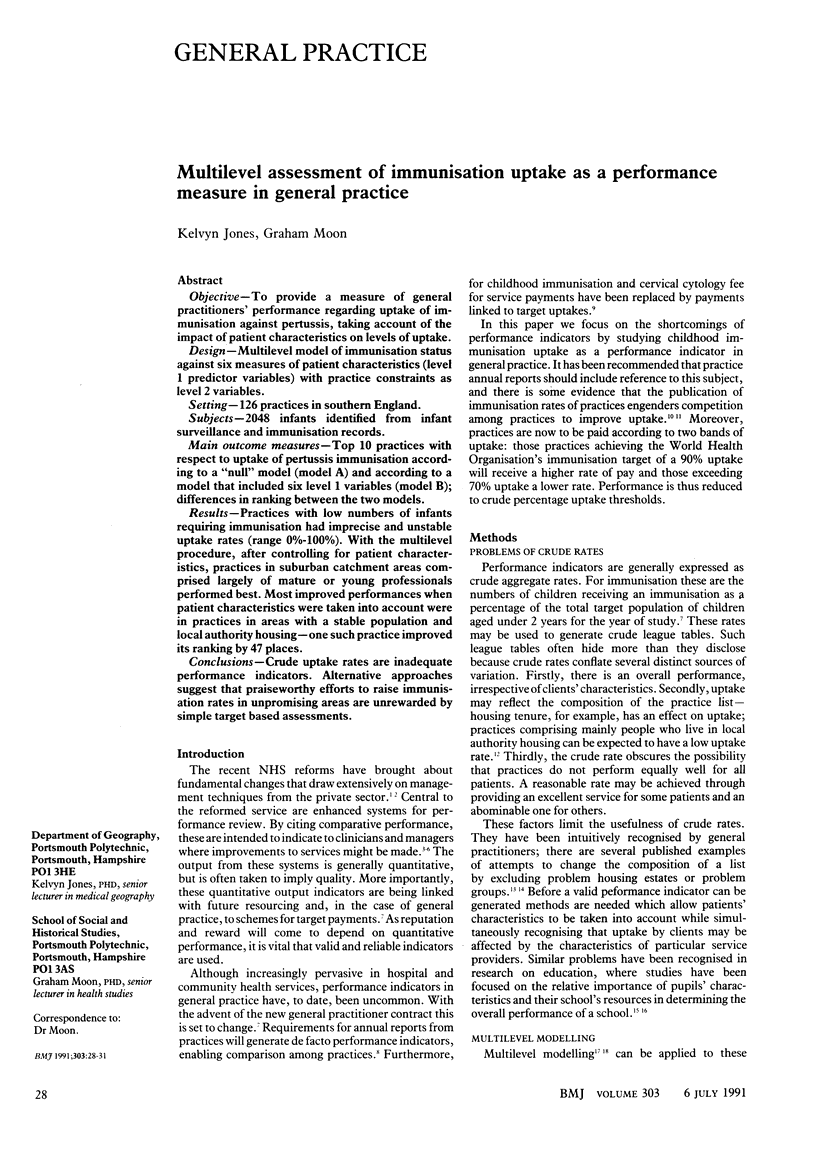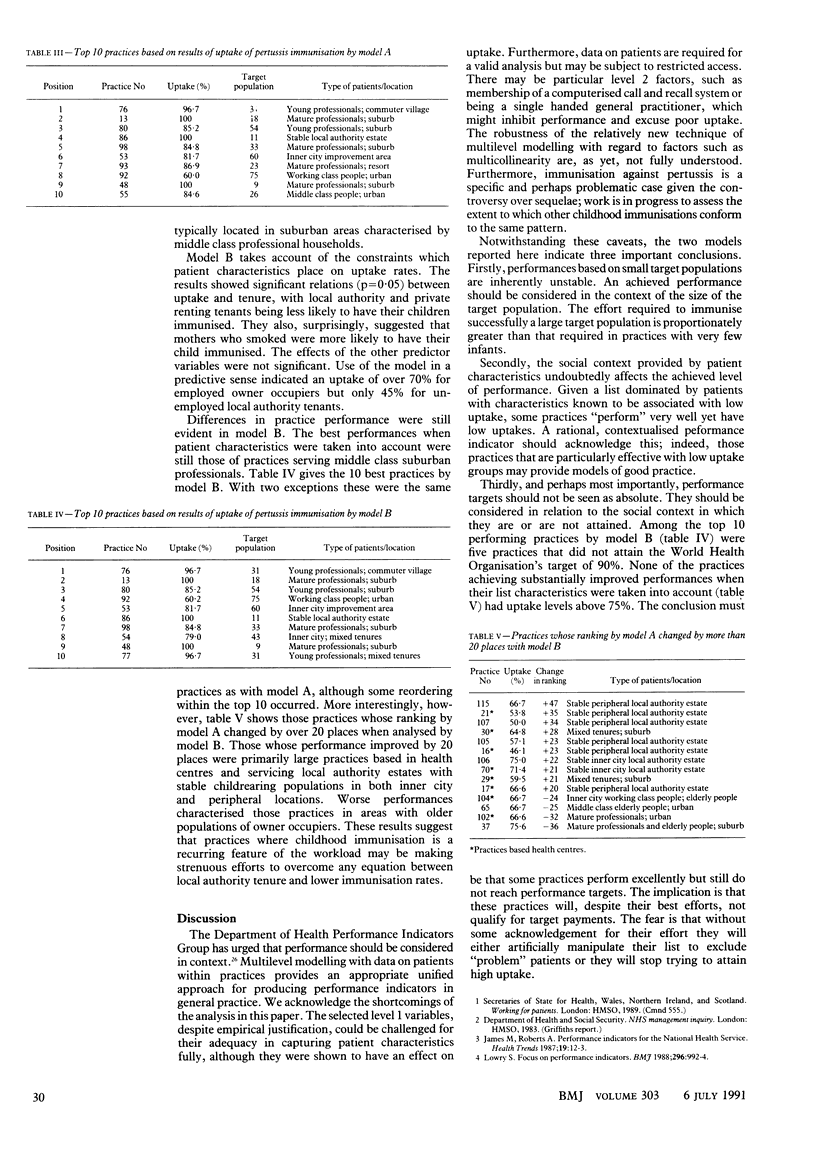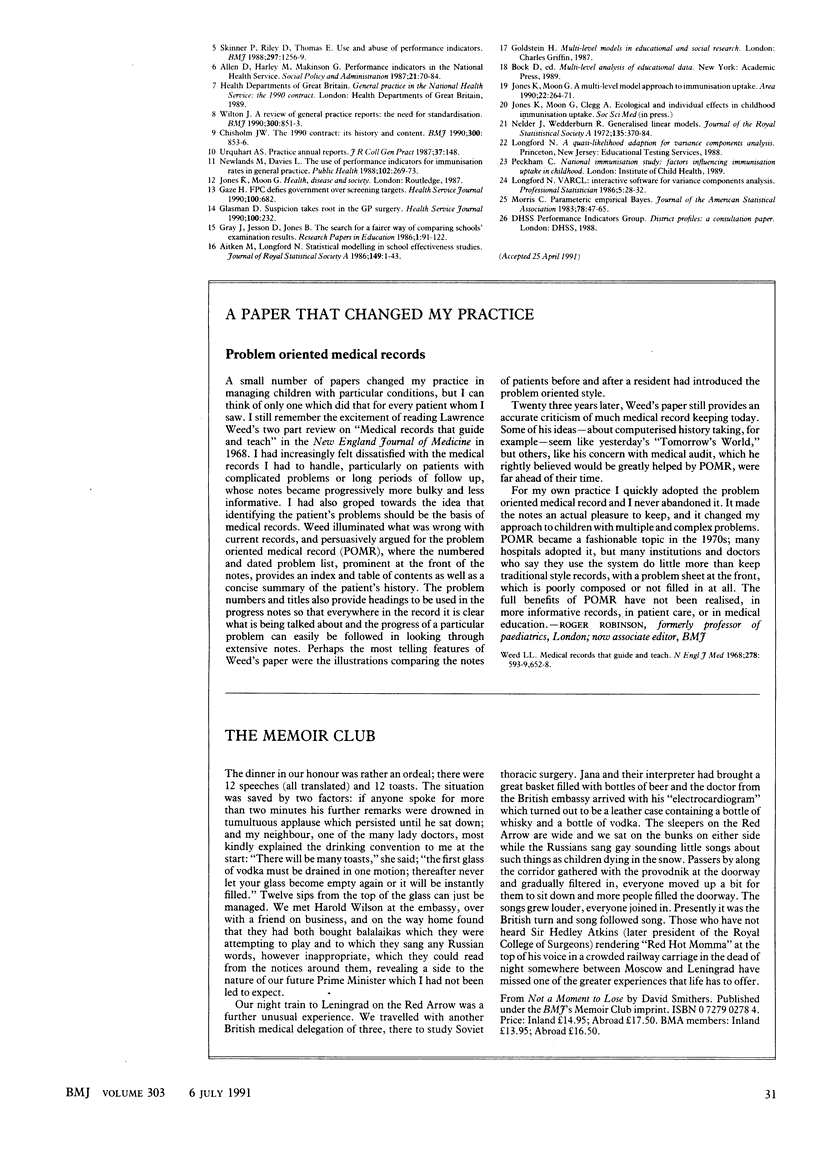Abstract
OBJECTIVE--To provide a measure of general practitioners' performance regarding uptake of immunisation against pertussis, taking account of the impact of patient characteristics on levels of uptake. DESIGN--Multilevel model of immunisation status against six measures of patient characteristics (level 1 predictor variables) with practice constraints as level 2 variables. SETTING--126 practices in southern England. SUBJECTS--2048 infants identified from infant surveillance and immunisation records. MAIN OUTCOME MEASURES--Top 10 practices with respect to uptake of pertussis immunisation according to a "null" model (model A) and according to a model that included six level 1 variables (model B); differences in ranking between the two models. RESULTS--Practices with low numbers of infants' requiring immunisation had imprecise and unstable uptake rates (range 0%-100%). With the multilevel procedure, after controlling for patient characteristics, practices in suburban catchment areas comprised largely of mature or young professionals performed best. Most improved performances when patient characteristics were taken into account were in practices in areas with a stable population and local authority housing--one such practice improved its ranking by 47 places. CONCLUSIONS--Crude uptake rates are inadequate performance indicators. Alternative approaches suggest that praiseworthy efforts to raise immunisation rates in unpromising areas are unrewarded by simple target based assessments.
Full text
PDF



Selected References
These references are in PubMed. This may not be the complete list of references from this article.
- Chisholm J. W. The 1990 contract: its history and its content. BMJ. 1990 Mar 31;300(6728):853–856. doi: 10.1136/bmj.300.6728.853. [DOI] [PMC free article] [PubMed] [Google Scholar]
- James M., Roberts A. Performance indicators for the National Health Service. Health Trends. 1987 Feb;19(1):12–13. [PubMed] [Google Scholar]
- Lowry S. Focus on performance indicators. Br Med J (Clin Res Ed) 1988 Apr 2;296(6627):992–994. doi: 10.1136/bmj.296.6627.992. [DOI] [PMC free article] [PubMed] [Google Scholar]
- Newlands M., Davies L. The use of performance indicators for immunisation rates in general practice. Public Health. 1988 May;102(3):269–273. doi: 10.1016/s0033-3506(88)80070-2. [DOI] [PubMed] [Google Scholar]
- Skinner P. W., Riley D., Thomas E. M. Use and abuse of performance indicators. BMJ. 1988 Nov 12;297(6658):1256–1259. doi: 10.1136/bmj.297.6658.1256. [DOI] [PMC free article] [PubMed] [Google Scholar]
- Weed L. L. Medical records that guide and teach. N Engl J Med. 1968 Mar 14;278(11):593–600. doi: 10.1056/NEJM196803142781105. [DOI] [PubMed] [Google Scholar]
- Wilton J. A review of general practice reports: the need for standardisation. BMJ. 1990 Mar 31;300(6728):851–853. doi: 10.1136/bmj.300.6728.851. [DOI] [PMC free article] [PubMed] [Google Scholar]


